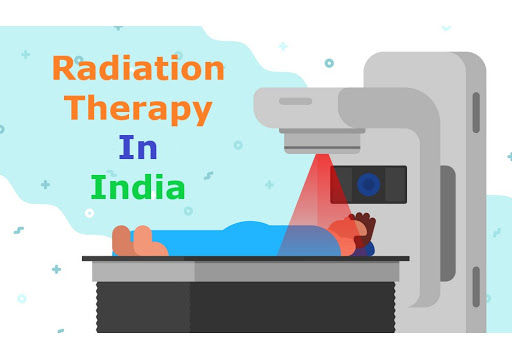
Dr. Donald John Babu
Oncologist
19 years of experience
5 (4)
- S L Raheja HospitalMahimRaheja Rugnalaya Marg., Opposite St. Xaviers CollegeMumbai
- Hcg Cancer CentreBorivali WestIC Colony, Near Holy Cross RoadMumbai
Share your review for Dr. Donald John Babu
Patient reviews for Dr. Donald John Babu
Arjun patel
12/12/2023
Leukemia
Dr. Donald Babu is a lifesaver! I was diagnosed with leukemia, and Dr. Babu provided exceptional care. His experience approach made a scary situation much easier to handle. He patiently explained the treatment options and answered all our questions, ensuring we understood everything. care and attention to detail made a difference in my journey to recovery. we grateful to meet dr donald .
Sneha Rao
09/12/2023
Thyroid Cancer
"Dr. Donald John Babu is an exceptional oncologist for Thyroid Cancer and his treatment was really effective. He explains the complex stuff in a way that makes it easy to understand. "
Neema Karthi
05/12/2023
Stomach Cancer Treatment
Dr. Donald Babu is an amezing docter! He helped my aunt, Mrs. Priya Karthi, 55, with her stomach cancer treatment. His care and treatment were very good and effective. He explain things nicely and support our family in this tough time
About Dr.Donald
Dr.Donald Specializations
- Oncologist
- Surgical Oncologist
Dr.Donald Awards
- Gold Medalist - Fellowship in European Board of Surgical Oncology 2015
- Gold Medal - Fellow in European Board of Surgical Oncology 2015
Dr.Donald Education
- MBBS - Government Medical College, Miraj
- MS - General Surgery - King Edward Memorial Hospital and Seth Gordhandas Sunderdas Medical College
- FCPS - General Surgery - King Edward Memorial Hospital and Seth Gordhandas Sunderdas Medical College
- MCh - Surgical Oncology - Tata Memorial Hospital, Mumbai
- FMAS - The Association of Minimal Access Surgeons of India
- Certificate of Membership in IAGES - IAGES
- MRCS (UK) - Edinburgh, U.K
- FICS - General Surgery - Ics
- FAIS - The Association of Surgeons of India
- FICS - Surgical Oncology - European Board of Surgical Oncology
- FALS - IAGES
Dr.Donald Experience
Specialist Senior RegistrarTata Cancer Hospital2015 - 2016
Assistant Medical OfficerShatabdi Hospital2011 - 2012
Dr.Donald Registration
- 2007/04/0712 Maharashtra Medical Council 2007
Memberships
- Association of Surgeons of India (ASI)
- ICS - International Collegium of Surgeons
Services
- Blood Cancer
- Breast Cancer Treatment
- Breast Cancer Treatment
- Cancer Surgery
- Colon Cancer
- Gynecological Cancer Treatment
- Laparoscopic Surgery
- Laser Surgery
- Leukemia
- Lung Cancer Treatment
- Lung Cancer Treatment
- Minimally Invasive Surgery
- Ovarian Cancer
- Robotic Surgery
- Thyroid Cancer
- Oncologist
Frequently Asked Questions (FAQ's) for Dr. Donald John Babu
What are Dr. Donald John Babu's qualifications?
Has Dr. Donald John Babu received any awards?
What are the areas of expertise of Dr. Donald John Babu?
What types of treatment does Dr. Donald John Babu provide?
How many years of experience does Dr. Donald John Babu have?
Questions answered By Dr. Donald John Babu (10)
. Heterogeneous Soft Tissue Nodule in the Right Lower Lobe (RLL) Size: 14 x 8 mm This nodule is described as heterogeneously enhancing, which suggests it may have varying levels of blood flow or different tissue densities within it. This could be indicative of a tumor. 2. Air Space Opacification in the Right Upper Lobe (RUL) Finding: There is patchy air space opacification with interlobular septal thickening in the posterior segment of RUL. This could represent infection, inflammation, or more concerningly, metastatic disease or lung cancer causing these changes. 3. Left-sided Pleural Effusion and Subsegmental Atelectasis Pleural Effusion: Mild left-sided pleural effusion is noted. Pleural effusion can occur in the context of metastatic disease or cancer. Atelectasis: This refers to partial lung collapse, which may occur when there is a mass obstructing the airflow or due to pleural fluid. 4. Enlarged Mediastinal and Hilar Lymph Nodes Lymphadenopathy: There are multiple enlarged and necrotic lymph nodes, most notably in the right hilar region, with the largest measuring 35 x 25 mm. Enlargement and necrosis of lymph nodes can be a sign of metastatic spread. The presence of enlarged lymph nodes in the mediastinum and hilum is typical of malignancy spreading beyond the primary lung site. 5. Liver Lesion Size: 14 x 13 mm lesion in the right hepatic lobe, which is well-defined and peripherally enhancing. A hypodense lesion could indicate a metastatic tumor, especially since it shows peripheral enhancement, a characteristic of some types of metastases. 6. Skeletal Lesions Multiple Lesions: There are mixed lytic and sclerotic bony lesions, some with soft tissue components. These lesions involve the vertebrae, ribs, glenoids, sternum, sacral ala, iliac bones, and femur. Soft Tissue Components: Some of the lesions, such as those in the ribs and iliac bones, have a soft tissue component, which suggests more advanced involvement, possibly indicating metastases. 7. Other Findings: No signs of emphysema, bronchiectasis, or pneumothorax were noted, which is reassuring as it reduces the likelihood of certain types of lung diseases. The liver, spleen, pancreas, kidneys, urinary bladder, and prostate all appear normal on imaging, which helps to rule out major issues in these organs. Impression: The findings of a heterogeneously enhancing solitary pulmonary nodule in the right lung, with associated hilar and mediastinal lymphadenopathy, along with a hepatic lesion and extensive skeletal involvement (with mixed lytic and sclerotic lesions), strongly raise concern for metastatic disease, most likely originating from the lung. The primary lung cancer is a potential consideration, though other primary sites are also possible. Next Steps: Histopathological correlation: This means a biopsy or tissue sample should be taken from one of the lesions (pulmonary, hepatic, or bone) to confirm whether the lesions are malignant and, if so, to identify the type of cancer. This will help determine the best course of treatment. The overall picture suggests a metastatic malignancy, likely of pulmonary origin, but further investigations and biopsy are essential to establish a definitive diagnosis and treatment plan.
Answered on 8th Mar '25
The imaging results indicate several concerning findings, including a nodule in the lung, fluid around the lungs, and enlarged lymph nodes, which could suggest a more significant issue, possibly a spread of cancer. While these findings can be alarming, they do require careful evaluation. I recommend consulting your oncologist for a thorough discussion and potential biopsy, which is crucial for accurate diagnosis and treatment options.
My kidney cancer percentage positive 3.8
Answered on 28th Nov '24
Kidney cancer is a life-threatening disease, with 3.8 percent positivity meaning that there are malignant cells in your kidneys. Symptoms such as blood in the urine, back pain, and weight loss can be seen. Smoking, obesity, and high blood pressure may be the causes. The treatment options may be surgery, radiation, or chemotherapy. It is important to communicate about the treatment with your oncologist.
1. Tumor Characteristics: Type: The tumor is identified as an invasive ductal carcinoma, NST (No Special Type), located in the upper outer quadrant of the breast. Grade: It’s classified as Grade 3, which is high grade, based on a Nottingham histologic score of 9. Size: The tumor measures 7.0 x 5.0 x 4.6 cm. 2. Additional Findings: DCIS (Ductal Carcinoma In Situ): Present with a "comedo type" pattern, which is aggressive, with high nuclear grade and central necrosis. Lymphovascular Invasion: Detected, suggesting cancer cells may be spreading to nearby lymph or blood vessels. Microcalcifications: Absent. 3. Margins: One of the specimen's margins shows invasive carcinoma, meaning the cancer is close to or touching the edge of the removed tissue. Other margins are 1-2 mm away from the invasive carcinoma. Impression: This is a high-grade invasive ductal carcinoma, meaning it is an aggressive form of breast cancer.
Answered on 11th Nov '24
According to the diagnosis you have received from the doctor, you have a high-grade invasive ductal carcinoma in the breast. This type of cancer is really a fast-growing type of cancer. It concors the breast and causes like a lump in the breast or skin changes. The origins of the disease are not always acknowledged, but the factors like the genes and hormone levels might be contributing to the risk. For this, an oncologist may accept a scheme with a combination of surgery, chemotherapy, and radiation therapy to remove or eradicate the cancer cells.
Read blogs reviewed by Dr. Donald John Babu

Throat Cancer Treatment in India: Advanced Care and Expertise
Access cutting-edge throat cancer treatments in India: renowned hospitals provide advanced care, expert oncologists, and personalized recovery plans.

Colon Cancer Treatment in India
Discover advanced colon cancer treatment options in India. Renowned specialists, cutting-edge technology ensure comprehensive care and better outcomes. Explore options today!

Radiation Therapy in India 2024: Costs, Hospitals, and Doctors
Access advanced radiation therapy in India. Explore state-of-the-art facilities, experienced oncologists, and personalized treatment plans for cancer management.

Leukemia Treatment in India (Compare Hospitals & Cost)
Discover comprehensive insights on leukemia treatment in India, including top hospitals, doctors, and new treatment advancements.